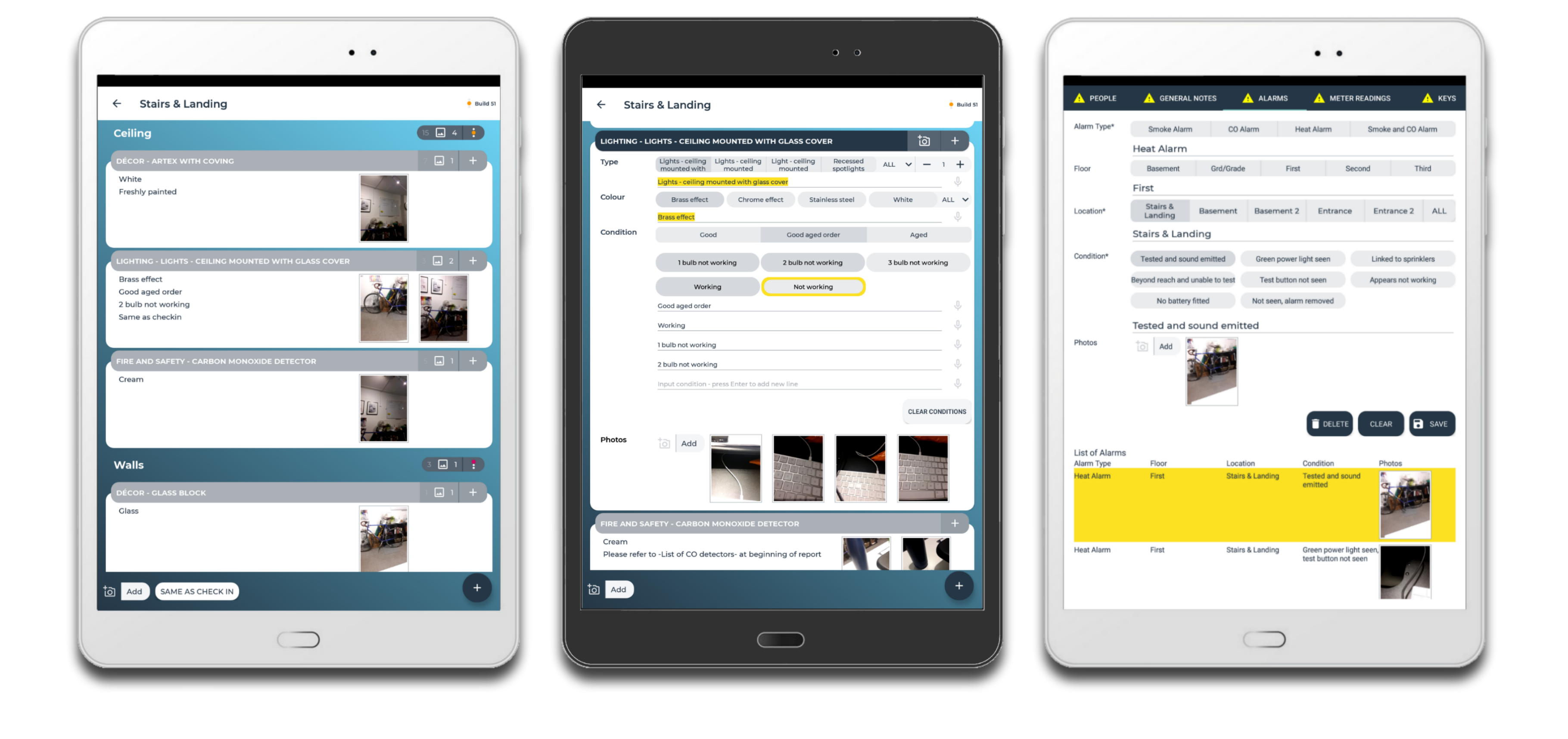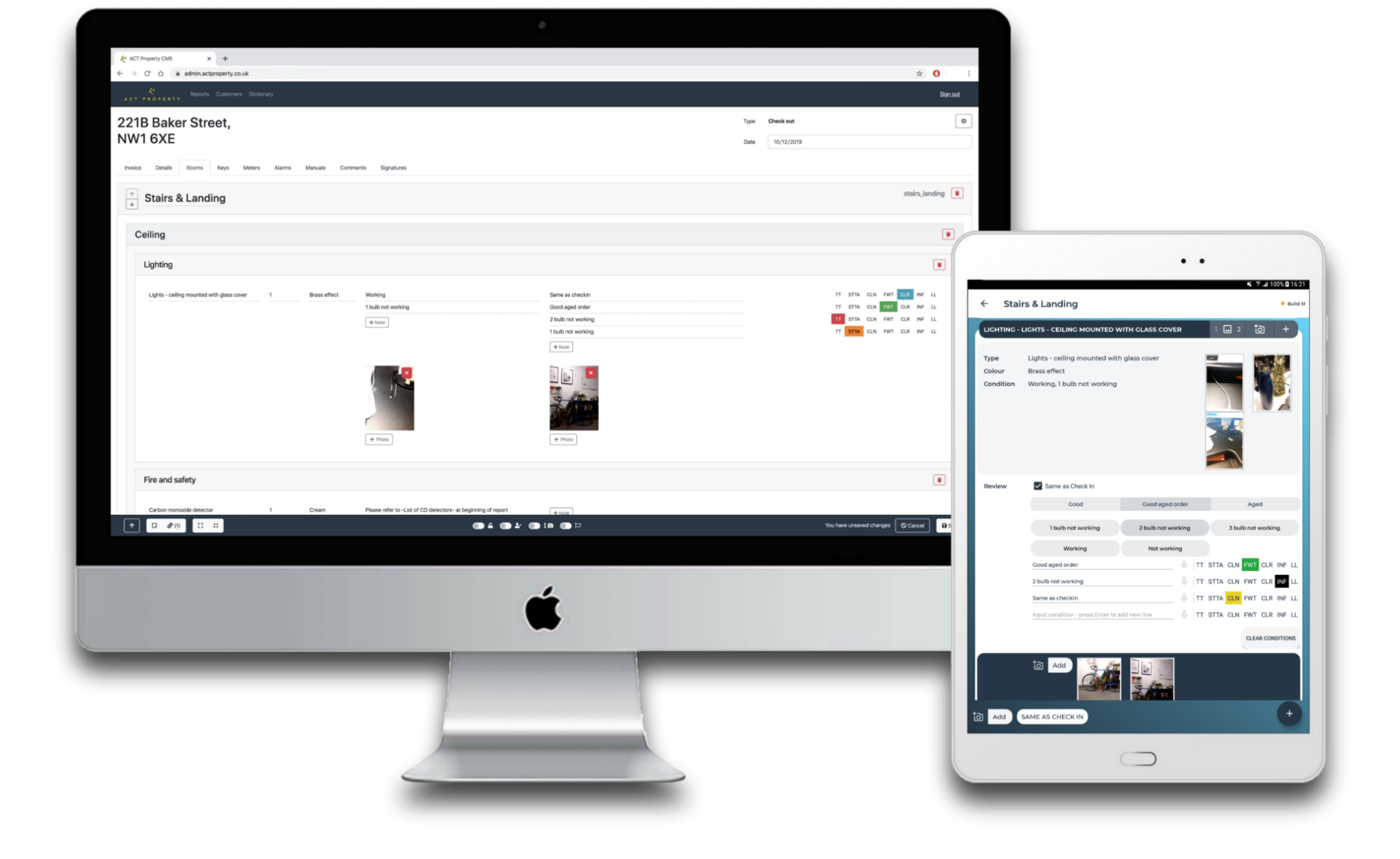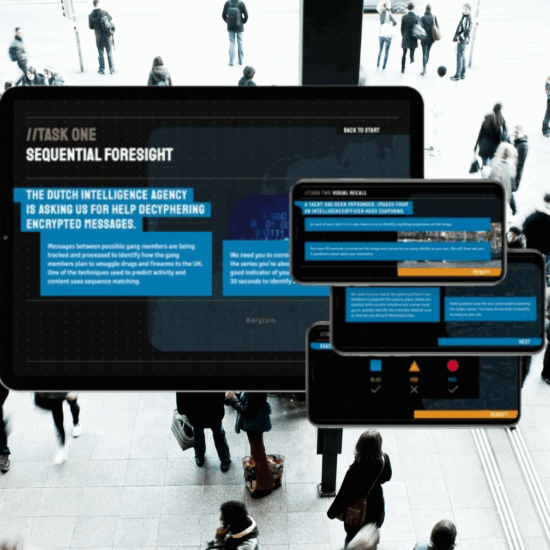

ACT Property
Inventory app and CMS
ACT provide an exceptional property inventory service in London and right across the UK. But inventories can be painstakingly slow and repetitive.
We helped revisit the role of technology in the process of doing a property inventory and began by distilling the brief into a two word goal: fewer clicks!
Alongside the design sprints, we spent time with prototypes, testing the usability of the key input areas where we knew valuable seconds could be saved.
This also revealed the points where further simplification could be designed into the workflow – aside from the ‘easy wins’ that all existing users had highlighted at the start. The final Android app is fast, intuitive and accurate allowing inspectors to complete a report in roughly half the time it had previously taken.
The other side of the project was to re-build the CMS, which allows the office-based team to manage the reports, send invoices, organise appointments and allocate the liabilities that often arise after a property inspection. The CMS is also used in the field on various devices by managers, inspectors and others so we incorporated some typical Progressive Web App (PWA) tricks to make it more useful when intermittently offline:
1. App manifest – a JSON file that allows users to very simply install the CMS from the browser and pin it to their homescreen and also handles push notifications.
2. App shell – when the app shell is cached offline it ensures that the app loads quickly and smoothly when the user returns.
3. Service workers – these .js files run in the background and facilitate offline functionality such as report fetching and content caching.
Client:
ACT Property
Platforms:
Native Android, PWA
Technology:
Kotlin, Bootstrap, Vue JS, MongoDB Atlas, AWS Cognito














